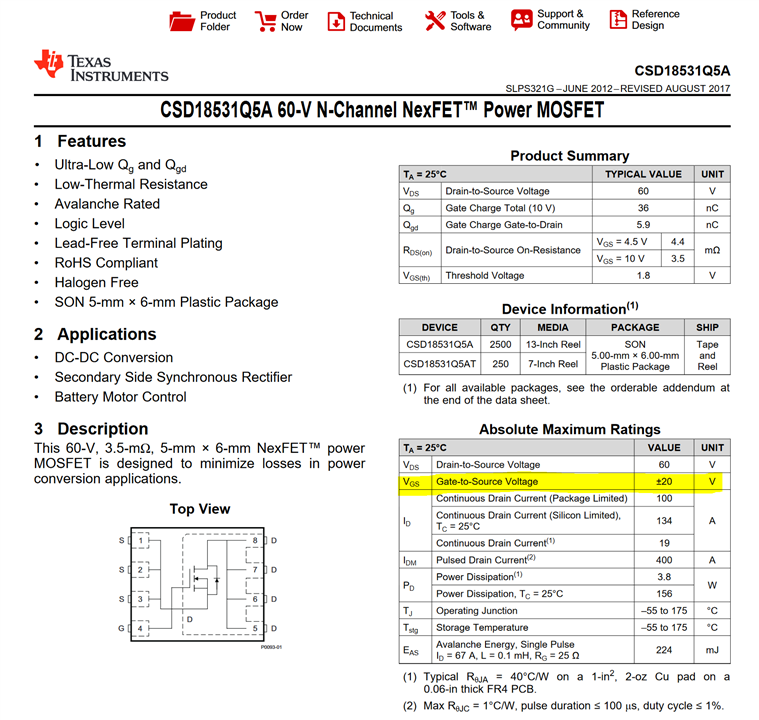Other Parts Discussed in Thread: DRV8711, CSD18531Q5A,
The high-side gate drive pin voltage (A1HS, A2HS, B1HS, B2H) in the DRV8711 datasheet is spec'd to range from -0.6V to VM+12V (see below). 
In simulations we have run we noted that before the driver starts generating output pulses there is a situation that appears to put the MOSFETs out of spec. Specifically, with VM => 40V (our system is 48V), it is possible the source of the high side MOSFET will be at 20V or greater (i.e. 1/2 * VM, or 24V in our system) - in this situation if the gate drive voltage is 0V (or down to -0.6V as the DRV8711 spec sheet says), the Vgs on the high side MOSFET will exceed -20V (-24V in our system) (see below).
Most MOSFETs on the market have a maximum Vgs of +/-20V, which means with VM > 40V most MOSFETS would be out of spec with a 0V gate drive voltage. Specifically in the evaluation board, DRV8711EVM, the MOSFETs are CSD18531Q5A, which has a maximum Vgs of +/-20V (see below).
The eval baord suggested VM could be as high as 52V, but if this is the case and the high-side gate drive voltage is 0V, these MOSFETs are out of spec. I need to understand the characteristics of the high-side gate drive pin voltage in this chip and specifically must be able to definitively say that the MOSFETs maximum Vgs of +/-20v will not be exceeded. Can anyone provide test data or theory of operation that can assure me these high-side MOSFETs will stay in spec during operation?

